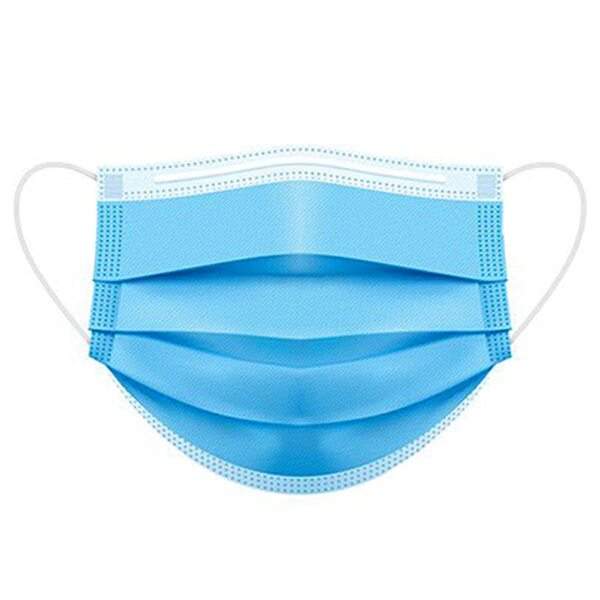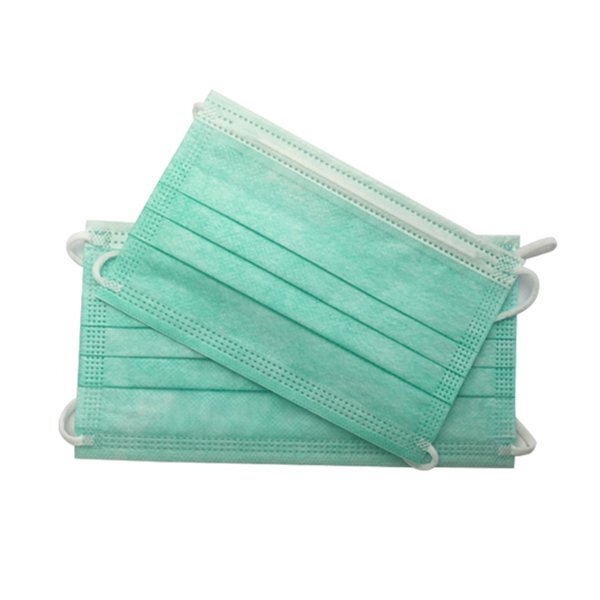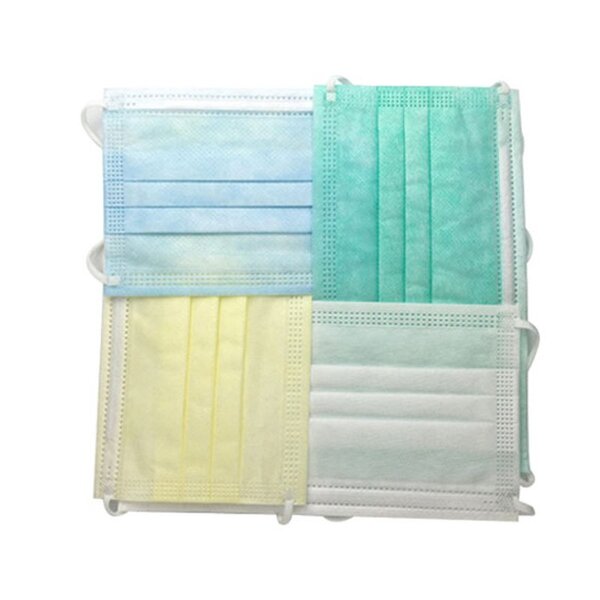Surgical masks have become a ubiquitous sight in our daily lives, especially during the COVID-19 pandemic. They are touted as a simple yet effective tool in preventing the spread of respiratory illnesses. In this comprehensive article, we will delve into the effectiveness of surgical masks in various settings and explore their role in protecting public health.
Surgical masks, often referred to as medical masks or face masks, are protective devices primarily designed to cover the nose and mouth. They are an essential tool in healthcare settings and have gained widespread use in various public and occupational settings, particularly during the COVID-19 pandemic. These masks are distinct from respirators like N95 masks, which offer a higher level of filtration and a tighter fit.
Surgical masks, those ubiquitous protective face coverings, play a vital role in preventing the transmission of respiratory infections. But how do these seemingly simple masks work to keep us safe? In this section, we'll explore the mechanisms behind their effectiveness.
Barrier Protection:
At its core, a surgical mask functions as a physical barrier between the wearer's nose and mouth and the outside environment. It prevents respiratory secretions, such as saliva, mucus, and respiratory droplets, from entering or exiting the mask.
Filtration:
Surgical masks contain multiple layers of material designed to filter out larger particles, including respiratory droplets. These layers are typically made of materials like polypropylene, non-woven fabric, and melt-blown material.
While they are not as effective at filtering out tiny airborne particles as N95 respirators, surgical masks can capture respiratory droplets that may contain infectious agents like bacteria or viruses.
Electrostatic Attraction:
Some surgical masks incorporate a melt-blown layer that uses electrostatic attraction. This layer can attract and capture charged particles, further enhancing filtration efficiency.
Fluid Resistance:
Surgical masks often have a layer or treatment that provides resistance to fluid penetration. This is crucial in healthcare settings, as it helps protect against splashes of bodily fluids during medical procedures.
Fit and Sealing:
Proper fit is essential for surgical masks to work effectively. A well-fitted mask should cover the wearer's nose and mouth completely, with no gaps around the edges.
The mask's pleats allow it to expand to accommodate the face's contours, providing a secure fit.
Reduction of Respiratory Droplet Spread:
When a person wearing a surgical mask talks, coughs, or sneezes, the mask captures respiratory droplets containing potential pathogens. This reduces the dispersion of droplets into the surrounding air, making it less likely for others to inhale them.
Protecting the Wearer and the Community:
Surgical masks offer dual protection. They not only protect the wearer from inhaling potentially infectious droplets but also protect those around the wearer from being exposed to the wearer's respiratory secretions.
Proper Usage:
It's important to note that the effectiveness of surgical masks relies heavily on correct usage. Users should wash their hands before putting on and taking off the mask and avoid touching the mask while wearing it.
Surgical masks are typically designed for single-use and should be disposed of after each use to maintain their effectiveness.
There are various types of surgical masks, each designed for specific purposes:
Standard Surgical Masks: These are the most common surgical masks used in healthcare settings.
Surgical N95 Respirators: These combine the features of surgical masks and N95 respirators, offering a higher level of filtration.
Procedure Masks: These are often used in outpatient settings and for general-purpose protection.

Surgical masks have been a topic of extensive study when it comes to their effectiveness against various respiratory illnesses. Let's delve into their performance against some of the most common respiratory infections.
The COVID-19 pandemic brought surgical masks into the spotlight as a key tool in controlling the spread of the virus.
Preventing Asymptomatic Spread: One of the critical aspects of COVID-19 is that individuals can spread the virus even if they are asymptomatic. Surgical masks proved effective in reducing the transmission of respiratory droplets from asymptomatic carriers.
Source Control: When infected individuals wear surgical masks, the masks trap respiratory droplets that may contain the SARS-CoV-2 virus, thus reducing the risk of spreading the virus to others.
Protection for Wearers: While surgical masks primarily protect those around the wearer, they also offer some level of protection to the wearer, reducing the likelihood of inhaling infectious droplets.
Complementary Measures: Surgical masks are most effective when used in conjunction with other preventive measures, such as physical distancing and hand hygiene.
Influenza, a highly contagious respiratory illness, shares transmission characteristics with COVID-19. Surgical masks have also been studied in the context of flu prevention.
Reduction in Transmission: Surgical masks have been shown to reduce the transmission of influenza, especially when worn by individuals with flu symptoms.
Community-Wide Benefits: Widespread use of surgical masks during flu outbreaks can help protect communities by reducing the overall transmission rate.
Healthcare Settings: In healthcare facilities, surgical masks are a standard practice to prevent the spread of influenza among healthcare workers and patients.
Surgical masks are versatile tools that have demonstrated effectiveness against a range of respiratory infections, including:
Common Cold: Surgical masks can reduce the transmission of common cold viruses, such as rhinoviruses.
Respiratory Syncytial Virus (RSV): RSV is a common cause of respiratory infections, especially in children. Surgical masks can help prevent its spread.
Tuberculosis (TB): In healthcare settings, surgical masks are used as part of infection control measures to prevent the transmission of TB.
SARS and MERS: During the outbreaks of severe acute respiratory syndrome (SARS) and Middle East respiratory syndrome (MERS), surgical masks were used to reduce transmission.

The effectiveness of surgical masks in providing protection against respiratory infections is influenced by several critical factors. Understanding these factors is essential for maximizing their efficacy.
Proper Fit: One of the most crucial factors in surgical mask effectiveness is a proper fit. A mask should cover both the nose and mouth entirely, with no gaps or openings around the edges.
Nose Bridge: Ensuring that the mask conforms snugly to the wearer's nose is important. Masks with adjustable nose bridges help achieve a better seal.
Ear Loops or Straps: The method of securing the mask, whether through ear loops or head straps, can affect fit. Comfortably securing the mask in place is essential to maintain a seal.
Impact on Effectiveness:
A well-fitted mask reduces the risk of air leakage, preventing unfiltered air from entering or exiting around the edges of the mask.
Proper fit enhances both source control (protecting others from the wearer's respiratory droplets) and wearer protection (reducing inhalation of infectious droplets).
Layered Construction: Surgical masks typically consist of multiple layers of material. High-quality masks often have additional layers or enhanced filtration materials.
Material Selection: The choice of materials, such as polypropylene, non-woven fabric, and melt-blown material, affects the mask's ability to filter out respiratory droplets and particles.
Electrostatic Attraction: Some masks incorporate a melt-blown layer with electrostatic properties, which can increase filtration efficiency by capturing charged particles.
Impact on Effectiveness:
Masks of higher quality and superior materials generally provide better filtration and protection.
Masks with electrostatic layers can enhance filtration, particularly for smaller particles.
Single-Use Design: Surgical masks are typically designed for single-use and should be disposed of after each use to maintain their effectiveness.
Cumulative Moisture and Contamination: Over time, a surgical mask can become moist due to the wearer's breath and external factors. Moisture can compromise the mask's filtration efficiency.
Physical Damage: Prolonged use or rough handling can result in physical damage to the mask, potentially leading to tears or openings.
Impact on Effectiveness:
Extended use of a surgical mask can reduce its filtration efficiency, especially when moisture is involved.
Regularly inspecting masks for signs of damage and replacing them when necessary is crucial for maintaining effectiveness.

1. Clean Hands: Before handling the mask, wash your hands thoroughly with soap and water for at least 20 seconds or use hand sanitizer with at least 60% alcohol.
2. Inspect the Mask: Examine the mask for any visible damage or dirt. Discard any damaged or soiled masks.
3. Orient the Mask: Identify the top and bottom of the mask. The top typically includes a metal strip (nose wire), while the bottom is usually pleated for a snug fit under the chin.
4. Proper Placement:
Hold the mask by the ear loops or head straps.
Place the mask over your nose and mouth, ensuring it covers both completely.
Adjust the nose wire to fit the shape of your nose for a secure fit.
Pull the mask down to cover your chin.
5. Secure the Mask:
If using ear loops, gently loop them over your ears.
If using head straps, secure them behind your head and neck.
Ensure the mask is snug but not overly tight.
6. Fit Check:
Press down on the mask's edges around your nose to mold it to your face.
Check for any gaps along the sides. If gaps are present, readjust the mask.
7. Avoid Touching the Mask: Once the mask is on, avoid touching or adjusting it. Touching the mask may transfer contaminants to your hands.
8. Proper Removal:
To remove the mask, avoid touching the front surface.
If using ear loops, remove them by pulling them off your ears.
If using head straps, carefully remove the bottom strap first, followed by the top strap.
Discard the mask immediately in a closed trash bin.
9. Hand Hygiene: After mask removal, wash your hands thoroughly with soap and water for at least 20 seconds or use hand sanitizer.
10. Avoid Reusing Disposable Masks: Surgical masks are designed for single-use and should not be reused. Dispose of them properly.
Proper disposal of surgical masks is not only crucial for hygiene but also for environmental sustainability.
1. Discard Responsibly: Do not litter or dispose of used masks in public spaces. Always use a closed trash bin designated for medical waste or used masks.
2. Avoid Flushing: Do not flush used masks down toilets or sanitary systems, as they can clog pipes and harm wastewater treatment facilities.
3. Consider Eco-Friendly Alternatives: If possible, choose reusable cloth masks for non-medical use, which can be laundered and used multiple times. These options reduce the environmental impact of disposable masks.
4. Follow Local Guidelines: Comply with local regulations and guidelines for mask disposal, as they may vary by region.
Surgical masks have proven to be a valuable tool in preventing the spread of respiratory illnesses, especially when used correctly and in conjunction with other preventive measures. Their effectiveness is supported by a wealth of research and real-world evidence. However, it is essential to acknowledge their limitations and the importance of proper usage.
Wellmien, a trusted name in the industry, has consistently delivered high-quality surgical masks to meet the demands of various healthcare settings and the general public. With a commitment to quality and a range of products designed to suit different needs, Wellmien continues to play a crucial role in safeguarding public health.
As we navigate the challenges of a changing world, the simple act of wearing a surgical mask can contribute significantly to our collective well-being. So, whether you are a healthcare professional, a concerned citizen, or a business owner, remember that choosing the right surgical masks and using them correctly is a vital step in protecting yourself and those around you.